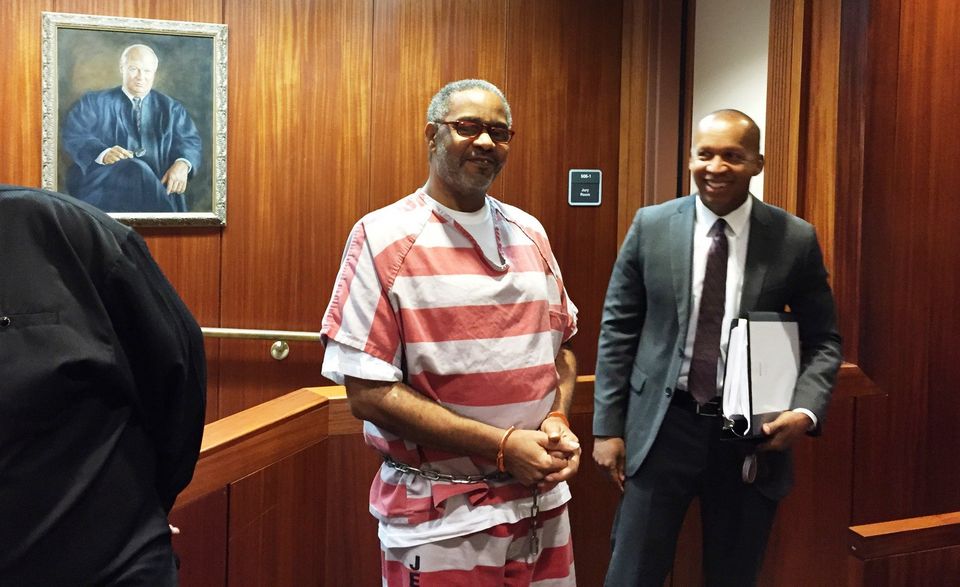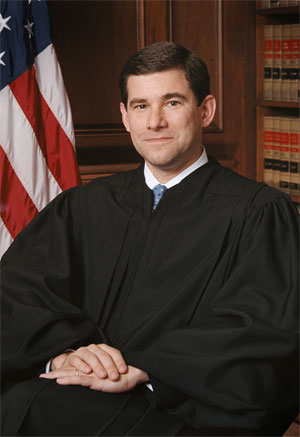when you punish an innocent Black Man with death, who is the criminal? Racist Suspects Free Anthony Hinton after 3 Decades on Death Row in Wrongful Conviction for Murder of White Victims [evidence was not new - white prosecutors ignored it]
/
Racism is a worldwide system of control & oppression against non-white people. It is the dominant feature of the criminal justice in the United States and Alabama. The death penalty is a form of violence committed through the America's criminal justice system against mostly poor, non-whites. [MORE]
More than half of the 3095 people on death row nationwide are people of color; 42% are African American. Prominent researchers have demonstrated that a defendant is more likely to get the death penalty if the victim is white than if the victim is black. The key decision makers in death penalty cases across the country are almost exclusively white. Despite decades of evidence showing that the administration of the death penalty is permeated with racial bias, courts and legislatures’ refusal to address race in any comprehensive way reveals a fundamental flaw in America’s justice system.
Alabama has the highest death sentencing rate in the United States. According to the Equal Justice Initiative, each year in Alabama, nearly 65% of all murders involve black victims, yet 80% of the people currently awaiting execution in Alabama were convicted of crimes in which the victims were white. Only 6% of all murders in Alabama involve black defendants and white victims, but over 60% of black death row prisoners have been sentenced for killing someone white.
Although black people in Alabama constitute 27% of the total population, none of the 19 appellate court judges and only one of the 42 elected District Attorneys in Alabama is black. Nearly 63% of the Alabama prison population is black. The State of Alabama disenfranchises more of its citizens as a result of criminal convictions than any other state in the country. [MORE]
Mr. Hinton spent 30 years on death row for a crime he did not commit. From [HERE] Anthony Ray Hinton, 58, spent half his life waiting to die on Alabama's death row, sentenced to die for two 1985 murders that for decades he insisted he did not commit. He was set free Friday after new ballistics tests contradicted the only evidence — an analysis of crime-scene bullets — that connected Hinton to the slayings. "They had every intention of executing me for something I didn't do," Hinton said outside the Jefferson County Jail in Birmingham.
Chief Deputy Jefferson County District Attorney John Bowers and Assistant District Attorney Mike Anderton filed a motion late last Wednesday afternoon to drop the prosecution of Hinton on the capital murder charges. The charges are being dropped after "three experts found that they could not conclusively determine that any of the six bullets" were fired from a gun found in Hinton's home, the motion states. No one saw him commit the crimes and nothing else linked him to them. There were reasons beyond the firearms evidence to doubt Mr. Hinton's guilt. He was at work, several people testified, when the third shooting happened. The car he was said to have driven on the night of the third shooting had been repossessed months before. The restaurant robberies continued after his arrest.
Bryan Stevenson, his lead attorney from the Equal Justice Initiative called Hinton's conviction a "case study" in what is wrong with the American justice system.
"We have a system that treats you better if you are rich and guilty then if you are poor and innocent and this case proves it. We have a system that is compromised by racial bias and this case proves it. We have a system that doesn't do the right thing when the right thing is apparent," Stevenson said.
"Prosecutors should have done this testing years ago." The Alabama attorney general's office declined to comment.
EJI attorneys engaged three of the nation’s top firearms examiners who testified in 2002 that the revolver could not be matched to crime evidence. State prosecutors never questioned the new findings but nontheless refused to re-examine the case or concede error. After another 12 years of litigation, the United States Supreme Court reversed lower court rulings in 2014, and Judge Petro granted him a new trial. She entered an Order of Nolle Prosequi last week after the State informed the court that forensic scientists with the Alabama Department of Forensic Sciences have tested the evidence and confirmed the prior testing which revealed the crime bullets cannot be matched to the Hinton weapon.

After 30 years in custody for crimes he did not commit, Mr. Hinton’s release is bittersweet. “We are thrilled that Mr. Hinton will finally be released because he has unnecessarily spent years on Alabama’s death row when evidence of his innocence was clearly presented,” said attorney Stevenson. “The refusal of state prosecutors to re-examine this case despite persuasive and reliable evidence of innocence is disappointing and troubling.”
When it comes to non-white defendants, due process, equal protection of the law, and reliability in criminal adjudications are not as important as finality. [MORE] In 2003 the state's lawyers did not attack the new findings and conclusions. They attacked the idea that such a hearing should be allowed at all. In emergency appellate papers seeking to stop the hearing in 2003 white prosecutors stated, "if the State of Alabama has to spend even one additional day in Birmingham, Alabama, defending the state, the state will be unduly injured in the form of additional per diem expenses, transportation expenses and loss of two assistant attorney generals for a complete work day." At that time, the state attorney general, Bill Pryor, said in a statement that he was not convinced by the new evidence. "The experts did not prove Mr. Hinton's innocence," Mr. Pryor said, "and the state does not doubt his guilt." [MORE] Pryor, in photo, is now a federal judge on the United States Court of Appeals for the Eleventh Circuit and a Commissioner on the United States Sentencing Commission.
In 1985, two white Birmingham area fast-food restaurants were robbed and the managers, John Davidson and Thomas Wayne Vason, were fatally shot. There were no eyewitnesses or fingerprint evidence; police had no suspects and pressure to solve the murders grew as similar crimes continued. On July 25, 1985, a restaurant in Bessemer was robbed and the manager was shot but not seriously wounded. Anthony Hinton was arrested after the manager identified him from a photo lineup, even though he was working in a locked warehouse fifteen miles away at the time of the crime. Police seized an old revolver belonging to Mr. Hinton’s mother, and state firearm examiners said that was the gun used in all three crimes. The prosecutor—who had a documented history of racial bias and said he could tell Mr. Hinton was guilty and “evil” solely from his appearance—told the court that its experts’ asserted match between Mrs. Hinton’s gun and the bullets from all three crimes was the only evidence linking Mr. Hinton to the Davidson and Vason murders.
Anthony Hinton, 29 years old with no history of violent crime, steadfastly maintained his innocence. A polygraph test given by police exonerated him, but the judge (now-retired Circuit Judge James Garrett) refused to admit it at trial. Mr. Hinton was appointed a lawyer who mistakenly thought he could not get enough money to hire a qualified firearms examiner. Instead, he retained a visually-impaired civil engineer with no expertise in firearms identification who admitted he could not operate the machinery necessary to examine the evidence. With no credible expert to challenge the State’s assertion of a match, Mr. Hinton was convicted and sentenced to death. Last year, the United States Supreme Court unanimously overturned his conviction based on his attorney’s deficient representation, and Judge Petro ordered a new trial.
The State’s evidence of a match was wholly discredited by three highly qualified firearms examiners, including the former chief of the FBI’s firearm and toolmarks unit, who testified in 2002 that the bullets from all three crimes could not be matched to a single gun at all, much less to Mrs. Hinton’s gun, and found that her gun could not have fired the bullets from the third uncharged robbery. For more than fifteen years, attorneys with the Equal Justice Initiative repeatedly have asked state officials to re-examine the evidence in this case, but former Jefferson County District Attorney David Barber, and Attorneys General from Troy King to Luther Strange, all failed to do so.
“Race, poverty, inadequate legal assistance, and prosecutorial indifference to innocence conspired to create a textbook example of injustice,” Mr. Stevenson said. “I can’t think of a case that more urgently dramatizes the need for reform than what has happened to Anthony Ray Hinton.”








































































































































































































































































